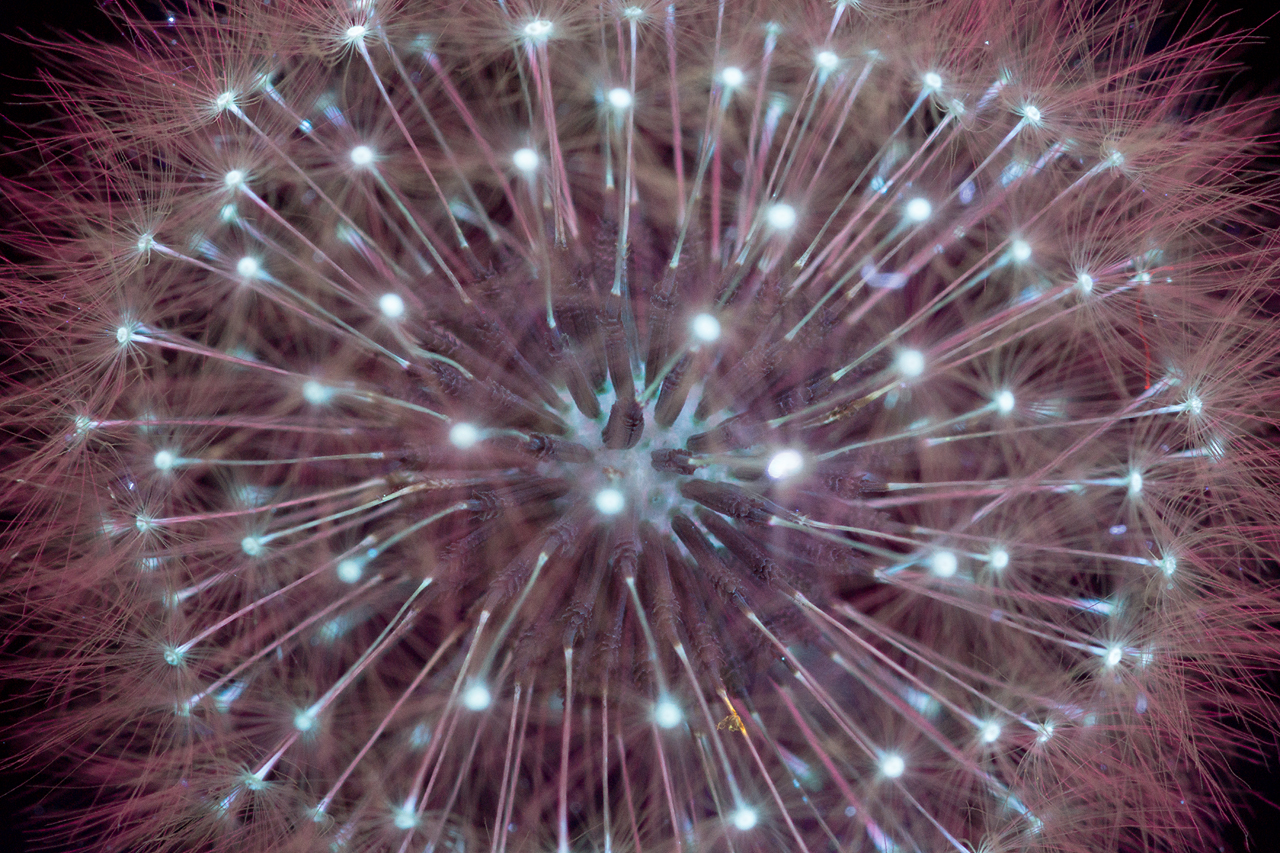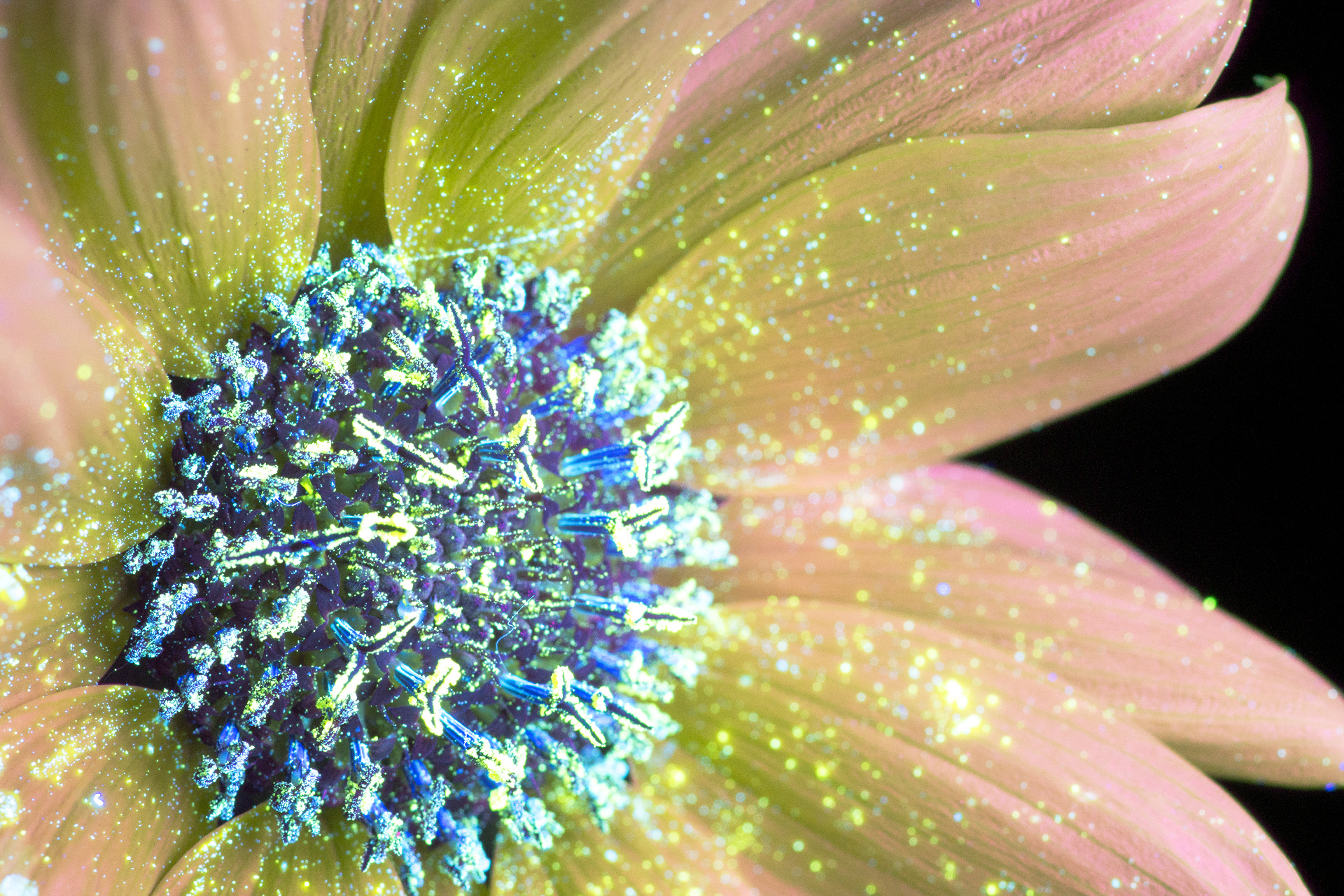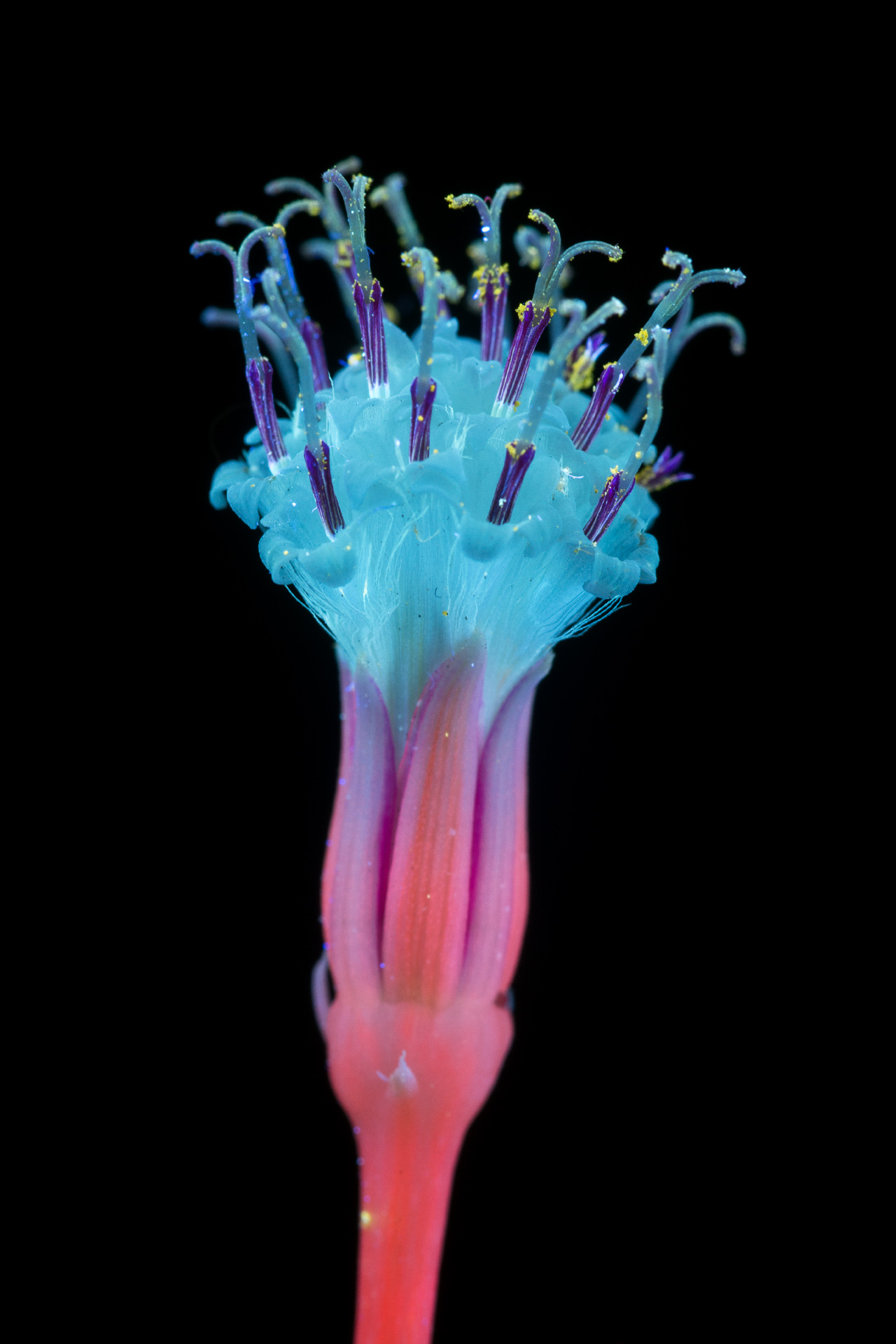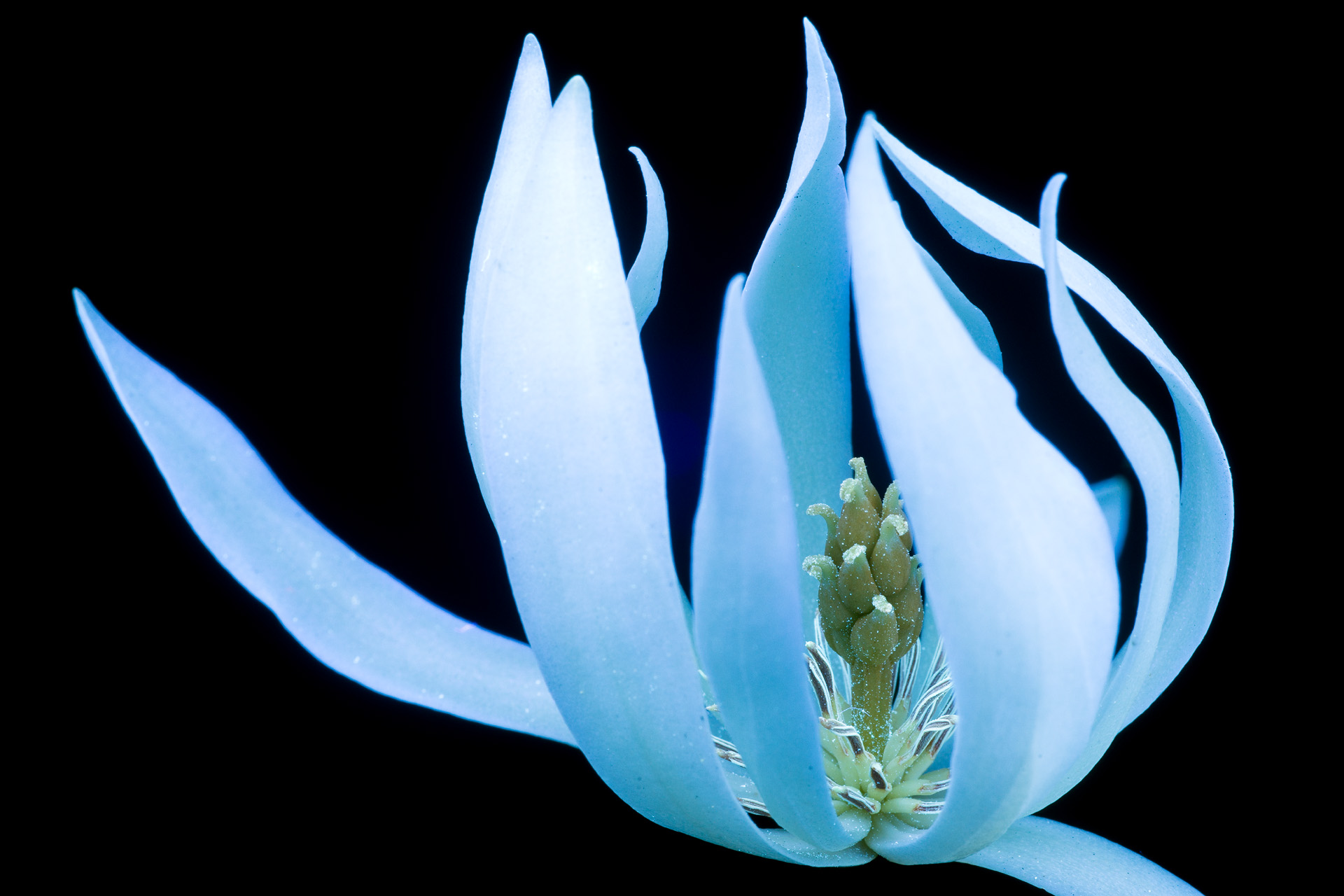
If we could see the flowers as bees see them they would be even more beautiful and varied!
Richard Feynman [The Feynman Lectures on Physics, Vol. I, Chap. 36, “Mechanisms of Seeing.”]

“Colour is what we perceive after our brains have processed visual information and

Different species have vision adapted to the necessities of their living conditions. “Colour vision is an advanced feature. Your primate ancestors probably evolved colour vision as an aid to finding fruit in trees, since
“All mammals have rods and cones in their retinas (the
“Cats’ eyes have similar light wavelength absorption, although the
“[..]dogs see
“A zebra would never attract mates with a bright show of colours, but a bird might (apart from which birds can fly away from predators that may spot their bright colours whilst a zebra can’t!). The colour vision of birds also explains why insects need authentic camouflage colours to avoid being spotted by their avian predators, hence many insects are coloured in shades of green, yellow or brown. Many insects also advertise their bad taste or toxic make-up or stinging ability to would-be predators by having contrasting stripes, as in bees and wasps. The birds will see the stripes and their colours, whilst most mammals will see the contrasting stripes as shades of grey.”6

“The visible spectrum, light wavelengths from violet to red, is the light that typical humans can see. Typical “humans have sensors in the retina that respond best to blue light (440 nm, actually blue-violet), or best to green light (545 nm) or to red light (actually to yellow, orange and red light)

The spectrum of colors visible to insects is a little higher in frequency than what we humans can see. The lowest frequency of color we see, red, is invisible to insects.

“The insect compound eye is designed very differently to the vertebrate eye. The insect eye has much poorer spatial resolution, due to its design constraints, but some have much higher temporal resolution. Like mammals, insects can adapt to see in low light levels at night, and like primates and birds, at least some of them can see colour. Most insects can also see ultraviolet light (whether as a colour or as shades of grey) which helps them to navigate using the Sun. “8

The symbiotic relationship between flowers and butterflies has evolved so that flowers encourage butterflies and other pollinators to feed on their nectar. Plants attract potential pollinators in many ways, including by their color, scent, reflectance, size, outline, surface texture, temperature, and motion. In contrast, plants that do not depend on insect or bird pollination are unlikely to have showy or scented flowers.


“When teaching about insect vision, it is important to also emphasize that “flowers have evolved to the eyes of the insect” and not the other way around. Insects predate flowers by over 100 million years. The coevolution with pollinating insects (such as bees) results in the flowers reproducing best when they signal only to their target pollinators in the colors they see. These signals appear as bullseye-like patterns of many flowers. Red light, often invisible to insects, is used by flowers to attract pollinating birds such as humming birds.”9



The Floral Reflectance Database (

“This research highlights that the world we see is not the physical or the ‘real’ world – different animals have very different senses, depending on the environment the animals operate in. [..] Much of the coloured world that’s accessible to bees and other animals with UV receptors is entirely invisible for us.”10

“We hope this work can help biologists understand how plants have evolved in different habitats, from biodiversity hotspots in South Africa to the cold habitats of northern Europe. [..] FReD’s global records may show how flower colour could have changed over time, and how this relates to the different insects that pollinate them, and other factors in their local environment.”11

Featured photographs are work of the photographer Craig P. Burrows, who employs photography method called ultraviolet-induced visible fluorescence that uses high-intensity UV lights to excite fluorescence found in some plants (and animals, and various objects), offering a glimpse of how (possibly) these flowers look through the insects’ eyes.

Photographs by Craig P. Burrows, website and Flickr
References:
1 Insect vision [https://cronodon.com/BioTech/Insect_Vision.html]
2 ibid
3
4
5
6 Insect vision [https://cronodon.com/BioTech/Insect_Vision.html]
7 ibid
8 ibid
9 Lincoln, J. and Davidhazy, A (2019) Ultraviolet photography and insect vision, The Physics Teacher 57, 204; https://doi.org/10.1119/1.5092494
10 Arnold SEJ, Faruq S, Savolainen V, McOwan PW, Chittka L (2010)
11 ibid
